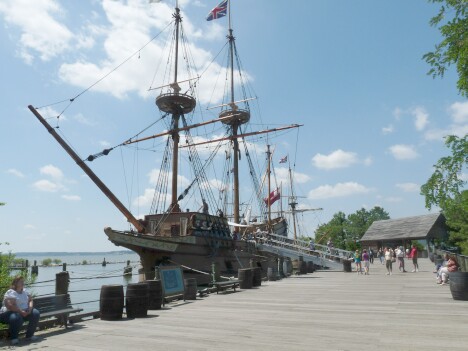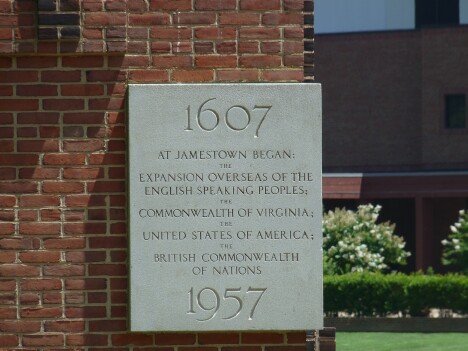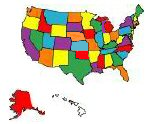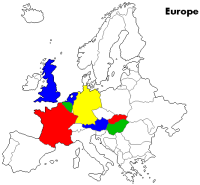More Funny Math?
Here’s the latest release from the CDC this past Tuesday, with another unexpected admission.
“A positive test result shows you may have antibodies from an infection with the virus that causes COVID-19. However, there is a chance a positive result means that you have antibodies from an infection with a virus from the same family of viruses (called coronaviruses), such as the one that causes the common cold.”
This is the case for the “past infection” test, not the current COVID-19 test to see if you have the virus right now. Current case counts do not include the antibody test and the antibodies are not detectable until well into or after the illness.
So, basically, if you’ve had a common cold and then get a WuFlu antibody test, you too could be a WuFlu case.
Now, as the above says, this is not a test for an active case of the WuFlu, but whether or not you’ve had it in the past. But remember in yesterday’s blog, Do As I Say, Not As I Do ?, where the CDC also revealed that they have been combining both active case totals and antibody test totals together in the new case totals, you know, those totals that are now supposedly ‘spiking’ again.
And here’s another article from the AP news service saying, US health officials believe 20 million Americans have had coronavirus.
U.S. officials believe as many as 20 million Americans have contracted the coronavirus, suggesting millions had the virus and never knew it.
That’s nearly 10 times as many infections as the 2.8 million cases that have been confirmed and comes as the Trump administration works to tamp down nationwide concern about the COVID-19 pandemic as about a dozen states are seeing worrisome increases in cases.
So what does this mean? It means that the mortality rate for the KungFlu is even lower than originally thought, I.e. it’s almost 10 times less, which puts in the same overall range of the normal seasonal flu.
And in the latest HCQ news, two really good studies have come out.
First up is the one from the Henry Ford Health System.
DETROIT – Treatment with hydroxychloroquine cut the death rate significantly in sick patients hospitalized with COVID-19 – and without heart-related side-effects, according to a new study published by Henry Ford Health System.
In a large-scale retrospective analysis of 2,541 patients hospitalized between March 10 and May 2, 2020 across the system’s six hospitals, the study found 13% of those treated with hydroxychloroquine alone died compared to 26.4% not treated with hydroxychloroquine. None of the patients had documented serious heart abnormalities; however, patients were monitored for a heart condition routinely pointed to as a reason to avoid the drug as a treatment for COVID-19.
The study was published today in the International Journal of Infectious Diseases, the peer-reviewed, open-access online publication of the International Society of Infectious Diseases (ISID.org).
And this recent study from Johns Hopkins Hospital System and the American Journal of Epidemiology, also shows that HCQ cuts the WuFlu death rate in half.
Contrast these two studies with the announcement last week that the much vaunted ‘miracle drug’ Remdesivir wasn’t that much of an actual miracle. Here’s was my blog post last week, A Miracle Drug??.
And here’s what I referred to as the ‘money quote’ from that post.
The drug interferes with the coronavirus’s ability to copy its genetic material. In a U.S. government-led study, remdesivir shortened recovery time by 31% — 11 days on average versus 15 days for those given just usual care. It had not improved survival according to preliminary results after two weeks of follow-up; results after four weeks are expected soon.
So with $3000+ Remdesivir you’ll get better 4 days earlier . . . if you don’t die first, since it makes no difference in the mortality rate.
Or you can try HCQ and have twice as good chance or surviving as without it.
Your pick.
Another in our Where We Were 11 Years Ago Today series.
July 2, 2009
Jamestown and Yorktown…and Yorktown
Today was our last full day in Williamsburg, VA and we wanted to tour the Jamestown Settlement of 1607, you know, Captain John Smith, Pocahontas and all that.
And we also wanted to tour the Yorktown Battlefield, one of the last big battles of the Revolutionary War.
But first, we had to move our coach.
When we made our reservations we knew we might have to move into an overflow site for our last day, since they were full. We were hoping they would have a cancellation so we wouldn’t have to move, but no such luck.
The overflow site had 30 amp power and water, but no sewer. No problem for just one day.
We moved with no problems, until I tried to plug into the power connection. As soon as my EMS (Electrical Management System) tried to put power to the coach, it shut down because the voltage dropped to 98 volts. I went to the office and told them about the problem and they said they’d look at it while we were gone. So we headed out to the Jamestown Settlement about 10 miles down the road.
They have a very nice complex here, consisting of a museum/exhibit building,

Jamestown Settlement Museum
a replica Powhatan Indian village,

Replica Powhatan Indian Village

Powhatan Hut Interior
replicas of the 3 ships that the colonists used to come to Jamestown,

The “Susan Constant”

The “Godspeed” and the “Discovery”
and a replica of the settlement fort itself.

Jamestown Settlement

Jamestown Settlement Buildings
The biggest building in the place was the church, which was also the community meeting area.

Jamestown Church
I can only imagine that the pews were so hard and uncomfortable to keep you from falling asleep during the services.

Jamestown Church Pew

Jamestown Dedication
After lunch at the Red City Chinese Buffet we headed out to the Yorktown Battlefield.
And then we discovered a slight problem. There are two Yorktowns.
One is called Yorktown Victory Center. This is the one that is advertised everywhere, and that we had bought tickets to when we bought our Williamsburg and Jamestown tickets.
But when we got to the area we found that the actual Yorktown Battlefield was not the Victory Center, but was a National Park run by the National Park Service. And of course, had a separate admission fee.
But it was really worth it, walking the grounds, climbing the earthworks, and looking out over the actual battlefield.

Yorktown Battlefield

Yorktown Battlefield 2
Here Washington, Lafayette, and the French Navy offshore surrounded the British Army under Gen. Cornwallis, and pounded them to pieces with cannons and mortars, and then attacked the British lines until Cornwallis surrendered his 8,000 troops on Oct. 19, 1781.
This was the last big battle of the Revolutionary War, although the War itself dragged on for another 2 years.
We did have an interesting talk from a guide about living and dying during the Revolutionary War. He talked about the clothing the soldiers wore, the food they are, the weapons they use, and the medical card they got, but probably wished they hadn’t.

Yorktown Seminar
While we listened to the guide, a small, furry visitor came out of the bushes beside us. The large groundhog looked around and then started grazing on the grasses. He didn’t seem too worried until about a dozen screaming kids went running for him, then he skedattled back into the thick bushes.

Yorktown Groundhog

Groundhog 2
And finally, we drove the 7 mile loop that circles all the different positions and battle areas.
After this we headed over the Yorktown Victory Center, which turned out to be basically a museum complex about the Battle of Yorktown, but not really near the battleground.
They did have a interesting timeline display covering the leadup to the Revolutionary War. The other thing they had was a replica of the town of Yorktown.

Yorktown 1

Yorktown 2

Yorktown 3
After we finished up at the 2nd Yorktown, we headed back to the coach, stopping off at Hooters for another hot wing fix.
Arriving back at the coach we found we still had power problems. They apparently hadn’t sent anyone to look at the problem. After I talked with the office, they said they’d send someone.
In the meantime I started to try to improvise something by pulling power thru an extension cord from a nearby empty sight.
But while I was doing that, I started up the generator to run the A/C’s because the coach was pretty hot. I hadn’t done it earlier because the people in the next site were in a tent and my generator exhaust was pointed right into their tent. But they had gone out for the evening so it was OK.
The first plug I tried wouldn’t work because it had a reversed hot/neutral and my EMS wouldn’t accept it.
The 2nd plug I tried seemed to work, for a few minutes, and then suddenly my EMS unit went ‘WHOOOMP”! and just died.
Great! Now I couldn’t get any power to the coach from the shore power.
And now the generator sounded different. In checking I found that I had lost half the feed from the generator, so some outlets wouldn’t work, and only the front A/C was getting power. This just gets better and better!
I had heard there was a way to easily bypass the EMS, but I didn’t know how and it was too late (10 pm) to call anyone. And of course the neighbors next door showed up, so I had to shut down the generator.
So we would have to try to make it thru the night using just the vent fans to keep us cool. Luckily it was supposed to fairly nice so hopefully it wouldn’t be a problem.
I still don’t know what happened to the EMS, but I’ll try to find out more tomorrow.
Thought For The Day:








